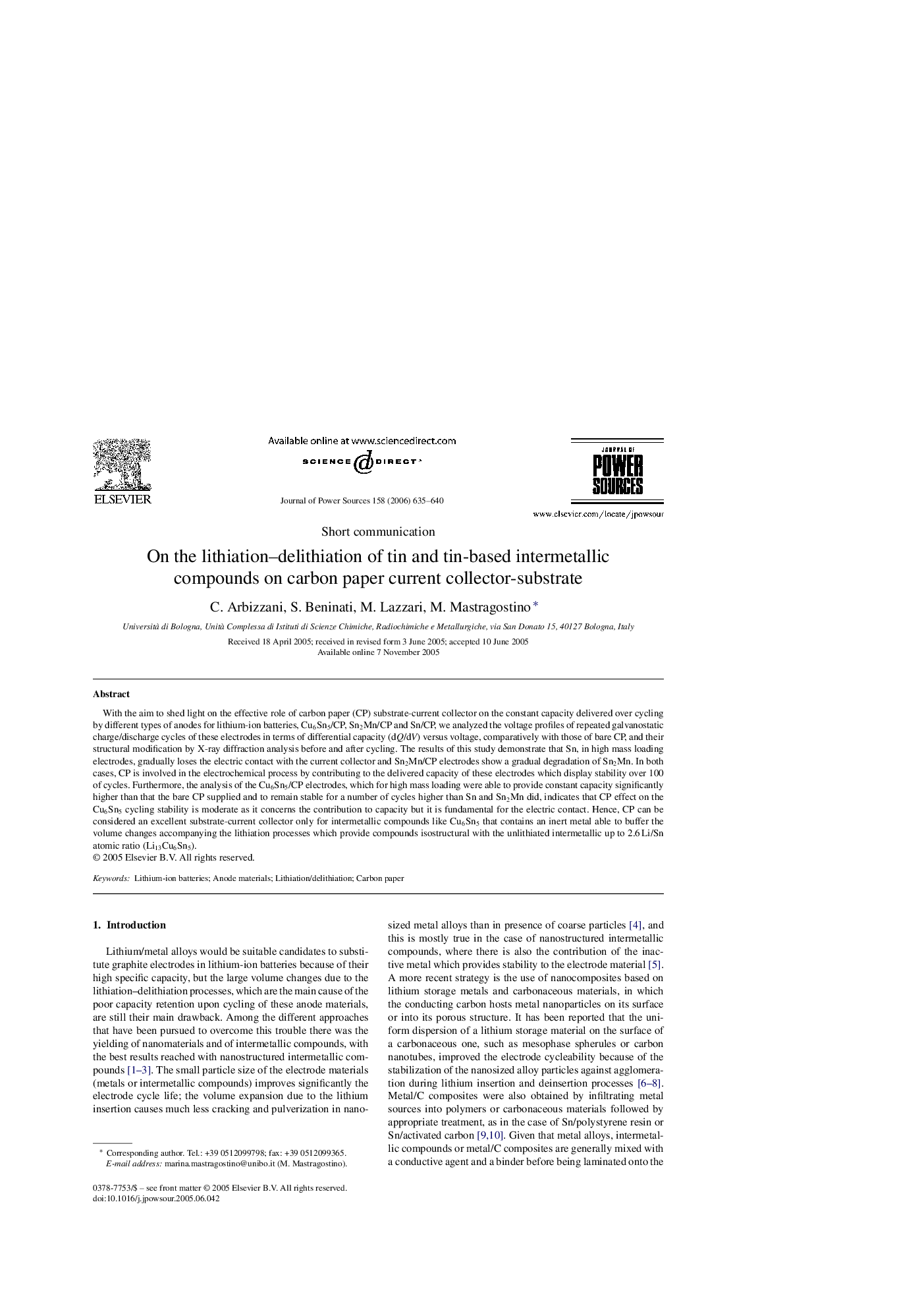| Article ID | Journal | Published Year | Pages | File Type |
|---|---|---|---|---|
| 1287613 | Journal of Power Sources | 2006 | 6 Pages |
With the aim to shed light on the effective role of carbon paper (CP) substrate-current collector on the constant capacity delivered over cycling by different types of anodes for lithium-ion batteries, Cu6Sn5/CP, Sn2Mn/CP and Sn/CP, we analyzed the voltage profiles of repeated galvanostatic charge/discharge cycles of these electrodes in terms of differential capacity (dQ/dV) versus voltage, comparatively with those of bare CP, and their structural modification by X-ray diffraction analysis before and after cycling. The results of this study demonstrate that Sn, in high mass loading electrodes, gradually loses the electric contact with the current collector and Sn2Mn/CP electrodes show a gradual degradation of Sn2Mn. In both cases, CP is involved in the electrochemical process by contributing to the delivered capacity of these electrodes which display stability over 100 of cycles. Furthermore, the analysis of the Cu6Sn5/CP electrodes, which for high mass loading were able to provide constant capacity significantly higher than that the bare CP supplied and to remain stable for a number of cycles higher than Sn and Sn2Mn did, indicates that CP effect on the Cu6Sn5 cycling stability is moderate as it concerns the contribution to capacity but it is fundamental for the electric contact. Hence, CP can be considered an excellent substrate-current collector only for intermetallic compounds like Cu6Sn5 that contains an inert metal able to buffer the volume changes accompanying the lithiation processes which provide compounds isostructural with the unlithiated intermetallic up to 2.6 Li/Sn atomic ratio (Li13Cu6Sn5).
